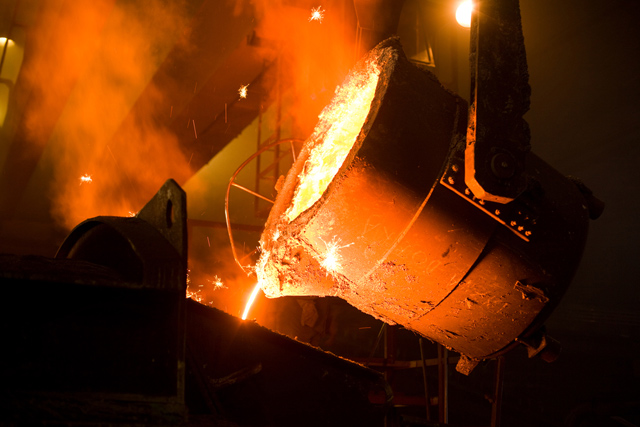
The two-year rally in industrial metal prices came to an abrupt end at the start of June.
The London Metal Exchange Index, a basket of the LME’s major base metal contracts, hit a three-year high of 3499.6 in the first week of that month.
Prices then imploded over the ensuing weeks and the blood-bath has continued ever since. The Index stood at 2845.5 as of Wednesday’s close, back at mid-2017 levels when the rally was just gathering a head of steam.
There’s no mystery as to what caused the crash.
The United States pulled the tariffs trigger on Chinese imports on June 15. China responded immediately in kind.
Trade jaw-jaw had just become war-war.
“The United States has initiated a trade war and violated market regulations, and is harming the interests of not just the people of China and the U.S., but of the world,” was the official Chinese Trade Ministry reaction.
Markets took China at its word and went into free fall as speculators, not least Chinese speculators, targeted the metals complex as a proxy for darkening growth prospects, not least Chinese growth prospects.
Politics has broken the economic cycle for the LME base metal pack, dislocating price from fundamentals and causing both market and supply-chain turbulence.
DISLOCATION AND DISTORTION
It’s instructive that the LME metal to fare best, or more accurately least worst, this year has been tin, down only four percent since the start of January.
The LME tin contract is simply too illiquid to be on the radar of most funds, particularly the macro players who have led the bear charge. As such, tin has been largely left to do its own thing, which is not very much.
Zinc and lead have fared worst. But then zinc had already lost its bull mojo earlier in the year, peaking at $3,595.50 per tonne in February. Retreat turned into rout in June. Lead, tied to zinc by relative value trades, had no choice but to follow its sister metal lower.
The accelerated bear time-line left the zinc price divorced from still bullish fundamentals. Nyrstar, the Belgian zinc smelting giant, issued a profit warning in September as it got squeezed between a falling metal price and stubbornly high charges for its raw materials.
The zinc disconnect is still playing out across the LME trading floor. The cash-to-three-months zinc spread CMZN0-3 hit an unprecedented backwardation of $125 earlier this month and as of Wednesday’s close it was valued at a still hefty $63.50 backwardation with plenty of shorter-term pain for short position holders.
“Doctor Copper” inevitably took the brunt of the macro selling, the LME three-month price slumping from a four-year high of $7,348 in early June to a one-year low of $5,773 in September.
Nickel, buoyed by strength from its traditional stainless steel driver and by future dreams of battery use, held out longest before succumbing to the bear pressure.
The narrative in both metals has turned to producer cost-curve support levels, a strange outcome in markets where physical indicators have remained robust and supply shortfalls are widely forecast ahead.
Aluminium has found itself on the front line of Trump’s trade wars.
U.S. sanctions on Russia’s Rusal whipsawed the price and ricocheted down a complex supply chain that flowed from Guinea to Ireland before hitting European automotive makers.
It too has been crushed by the subsequent trade war selling, even though there is a broad consensus that a deficit in the world outside China is finally eroding the stocks accumulated during the global financial crisis a decade ago.
As for China, it’s a sure sign that local aluminium producers are feeling the margin pain when they call one of their rare meetings to discuss market conditions.
In all cases other than tiny tin, the metals are not where they expected to be at this moment in the price cycle.
Politics has dislocated price and supply chains are still adapting.
DEAL OR NO DEAL?
Can metals recover next year?
It doesn’t help that global growth is decelerating. Nor that we are entering a seasonal low point for metals demand during the northern hemisphere winter.
Shorting copper is a favourite Chinese winter past-time. It has happened in four of the last six years, according to analysts at Citi.
Asia, Europe stocks slide after Fed rate hike
Bulls hope that Beijing’s latest mini-stimulus will mark a resumption of normal bull service after the Chinese New Year.
But all such traditional cyclical bets are off unless the trade war gloom is lifted.
Will there be a deal between the United States and China? That’s the single biggest question facing metal markets next year.
The lifting yesterday of sanctions against Rusal after months of prevarication is a sign that the Trump Administration is prepared to deal.
At a price.
Ironically, the sanctions news has pushed LME aluminium to new 16-months low this morning.
And largely, it seems, on U.S. terms.
What terms and what price will Beijing accept?
If the stand-off between the Administration and China were just about trade, there is plenty of scope for a deal, or even a series of mini accommodations.
If, however, “this is no classic trade war” but rather a “strategic rivalry across many fronts”, to quote James Kynge of The Financial Times speaking at the LME Week seminar in October, then a trade truce alone does not end the stand-off.
It might take some of the immediate pressure off metals prices but for how long?
Industrial metal supply chains are highly globalised, not just in terms of consumption by an equally globalised manufacturing sector, but also in terms of production.
China is not just a dominant producer of steel and aluminium but a global power-house across the metallic spectrum.
In a world where the Trump Administration is leading a return to economic and resource nationalism, it’s hard to see how global metals can break free of global politics.
This year may have just been a taster of the turbulence ahead.
